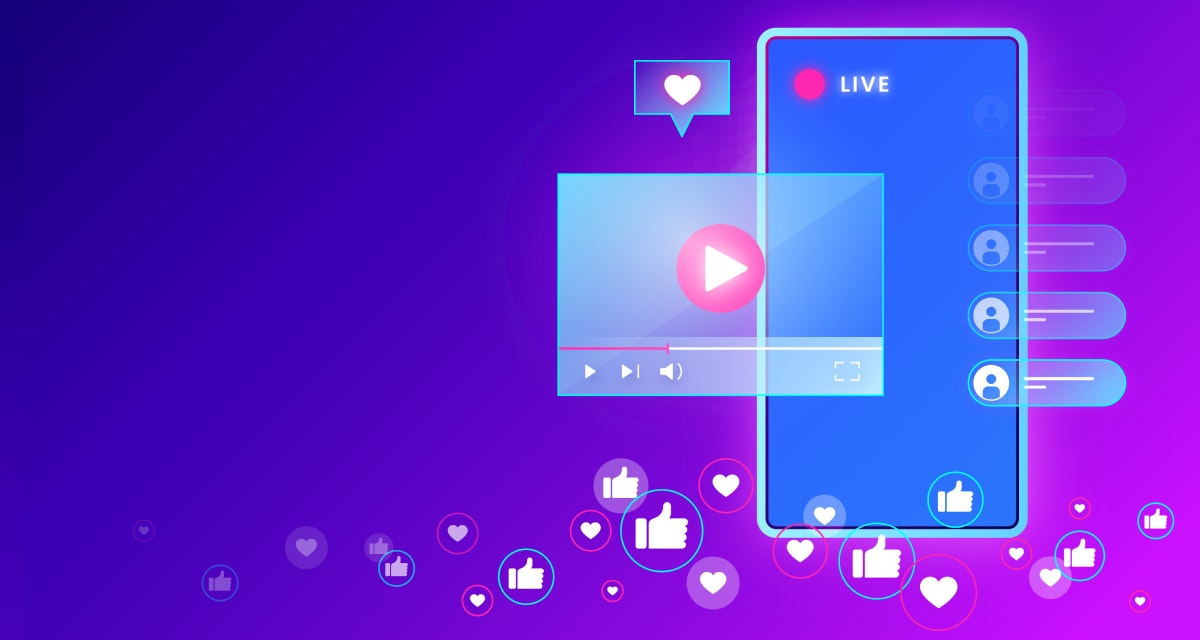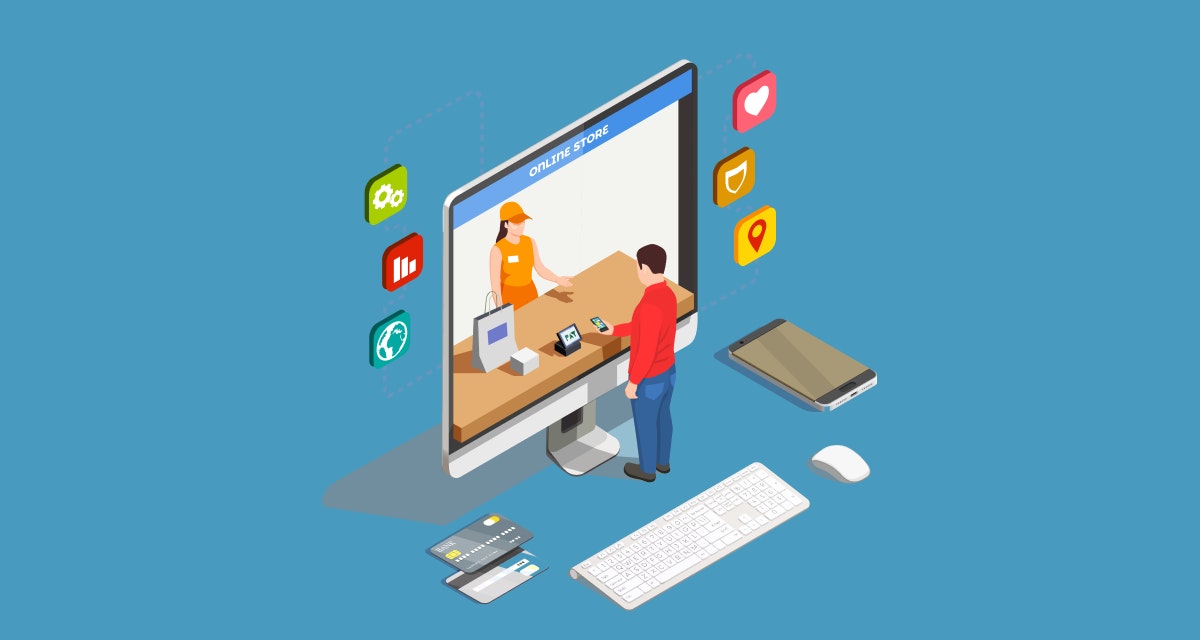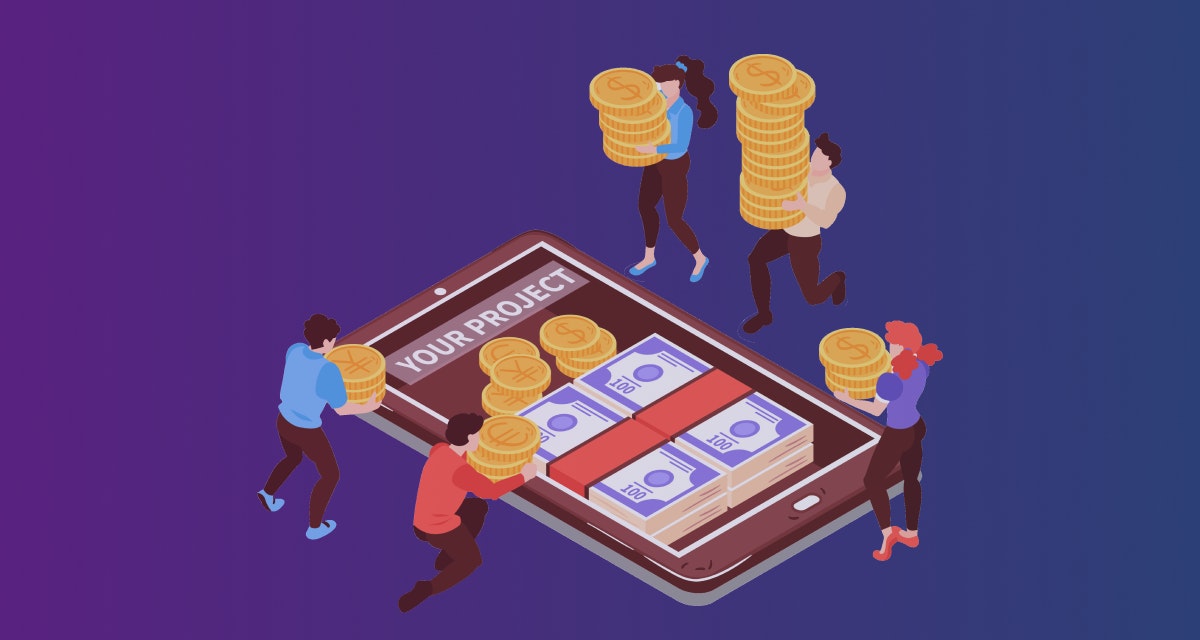Gone are those days when people would sit glued to the telly to watch a live baseball match or Macy's Thanksgiving parade. Today, all the attention and attraction that cable television amassed more than a decade ago has seemed to have lost its vigor.
This is the age of video streaming. The advent of this technology has changed how we consume media. Today, our lives are incomplete with Netflix, Amazon Prime Video, and Discovery+. In fact, more than 70% of YouTube watch time comes from mobile devices.
This is not surprising since research shows that consumers spend 1.5 hours a day, on average, watching videos online, and 15% of them report watching three hours of videos every day. That is true and for good reasons:
Advantages of streaming
- Streaming content is quicker and more efficient than downloading it, as it plays instantly and keeps loading video data bit-by-bit in the back for uninterrupted service.
- Streaming does not require on-device storage or space. There is no need for a hard drive to store or download the content. It plays as you go.
- There is no limit to how many videos you can watch in a day — as long your internet data permits.
But every technology has its downside:
Limitations of streaming
- You need an active internet connection to stream video content.
- A slow internet connection may hamper the viewing experience.
- Every repeat playback requires to be streamed, just like the new ones.
- There is a risk of losing financial and personal details when purchasing a subscription from untrustworthy platforms.
Nonetheless, streaming is here to stay and in fact, comes in different types:
Types of streaming media
Look around yourself, and you will find different kinds of streaming options. This section aims to explore four most popular ones:
1. Live broadcasting
This is the most popular kind of streaming media. Here, the videos are watched in real-time. Meaning, they are recorded and broadcast simultaneously.
The apps can launch a live stream of broadcast content such as a live game feed, a celebrity interview, or a product launch. Popular examples include Periscope by Twitter, Facebook Live, and Facebook Live.
2. Audio streaming
The agenda here is to allow users to listen to music without downloading it every time. For streaming audio files, apps such as Apple Music, Spotify, Pandora are widely used.
3. TV live streaming
Such applications allow users to watch TV online — on their mobile phones, tablets, or desktops. This way, they never have to skip their favorite shows. Top on-demand live-streaming video apps with plans for TV live streams are Hulu, YouTube TV, and Amazon Prime Video.
4. Video streaming
This type of streaming allows users to get their daily entertainment dose via TV series or movies, on their devices, without downloading them. Its functionality permits them to pause, rewind, and forward a video conveniently.
Customers pay a subscription fee to gain access to the content, though. Some of the video streaming market leaders are Netflix, Hulu, YouTube TV, and Amazon Prime Video.
Live streaming: what is it and why it is popular
Live streaming specifically has made itself indispensable in various aspects. For instance, live video conferences are a thing now. Education has gone digital, with students being given live tutorials online.
Oh, and have you forgotten security cameras that act as a safety device to keep an eye on children, the elderly, or pets? From watching entertainment videos to catching up on real-time news — it has also found a new purpose in our personal lives.
Features of a live streaming app
Multiple studies have shone a light on the steep rise in streaming apps popularity due to the pandemic that reduced people's mobility. Naturally, the demand for streaming apps is growing at a tremendous speed and is forecasted to be valued at $70 billion in 2021.
If you are thinking of developing a live streaming app, here are the features to include in it:
1. Signup options
While developing a live streaming app, add a registration option that requires the user's phone number, email address, and password. Also give a password reset option via a text message or email, and add several signup options via social media so that users can log in using their Facebook or Twitter accounts.
2. Personal profile
Decide what kind of information will be user profiles. Of course, you do not need a lot of user data initially, but you must cover the basics, such as full name, username, and subscription plans. If you want, you can later add more options such as profile picture, location, DOB, and feed preferences.
3. Chat option
Have you noticed that when celebrities live stream, they often read comments dropped by their viewers? Chatting is an essential feature needed to create a live streaming app as it enables the streamers to connect with their audience and monetize it. Platforms such as Twilio and Podium provide the basics needed to develop the chat functionality in the streaming app.
4. Search
Your viewers should conveniently search and browse through categories and filters such as location, genre, popularity, and language on the application. That is because, sooner or later, they will get bored of the same streams and would want to watch something else. It is your job to ensure they can search for fresh content on the app easily.
5. Screen sharing
The ability to share screens is a popular feature where one screen's contents can be broadcast on the other. Instagram Live has this functionality. If you can add this feature, you and your audience can exchange content in real-time on the application itself.
6. Push notifications
Notifying the viewers about upcoming streams and content is an excellent way to engage them and improve their experience. For instance, you can share the time at which you will have a live stream by sending a mobile push notification.
7. Feedback
Your viewers should be able to give feedback to you regarding your content or overall app experience. Comments and ratings are ways to do so. Ensure you include this functionality in your app for an optimal user experience.
Live streaming app trends to know about
Do you know the live streaming industry is expected to be worth $184.3 billion by 2027? Or that the online live streaming industry grew by 99% between April 2019 and 2020? The pandemic led to a 300% rise in live streaming events between March and August 2020.
There is no denying the fact that this technology helps businesses capture attention, expand their reach and earn brand loyalty. Here are some of its trends:
1. More domains are leveraging live video
Live video is accessible and many industries are using it for internal and external purposes. The fitness and personal health industry has gained importance in the past year.
Accessing online fitness programs and stream-able content is the new norm, and this trend has become a lifestyle for many consumers in general.
Similarly, telehealth or IoMT [Internet of Medical Things] is an emerging sector as last year's trends suggest. Deloitte predicts a rise in real-time, virtual video visits to doctors for consultations and medical treatment by 5% globally in 2021 — an increase from 1% in 2019.
Live streaming has also changed the way students learn. According to Kaltura, 53% of educational establishments live stream lectures, conferences and events.
2. Marketing cannot ignore live videos
Interesting forms of user-generated content [UGC] have led companies to focus on their power to dominate the mobile platform, and better connect with their target audience. For instance, live product reviews are a rage these days.
Many brands hold AMAs and debates to talk about their business, sell a service or touch upon a topic that is potentially trending in the industry. Live streaming has enabled an element of authentic human interaction.
3. AI to pick up steam
Innovations, such as blockchain technology and AI, are behind improving the video quality. Other interesting functionalities that can be seen in streaming apps include AI Face, Gender, Emotion Recognition software.
AI can already detect specific cues within videos such as facial and speed recognition and changes in lighting to automate live video production, including recording, graphic overlays and recording. AI will also help regulate authorized content by detecting copyrighted material in real-time.
4. Traditional encoding to stay in trend
On-demand viewing is on the rise and the number of subscribers are going up. Naturally, attempts to improve video quality will increase. H.264 encoding and HEVC [High-Efficiency Video Coding] are two types of codecs that are not going anywhere.
Eight things to consider while building a live streaming app
Creating something new from scratch is definitely an exciting process. If you are confused regarding where you want to begin, do not worry. This section covers eight things you must keep in mind during the live streaming app development process. Here you go:
1. Choose a Content Delivery Network [CDN]
This is unmissable if you want to scale your server. You may think you do need it now. But if you look at it from a long-term perspective, this is a useful option. The flawless content delivery is what makes CDN worth the investment — even though you might feel the costs are on the higher end. Your development team should help you in taking the right call.
2. Choose an appropriate operating system
When developing your live streaming app, using the most suitable operating system is crucial. If you are in doubt, take a call on the following metrics:
- Study the demographic you want to target
- Determine the most prevalent operating system used in that demographic with the help of online surveys, market research, customer feedback, and so on.
- For instance, if Android is the most used operating system in India, the next step should be to either go for native video streaming mobile app development or a hybrid model.
3. Use a reliable infrastructure solution
Once the number of users on your app grows and the videos get streamed by them in large volumes, they need reliable hosting. To ensure the quality of video and uninterrupted service delivery, a sturdy infrastructure is needed. The development team may decide the best solution for your business.
4. Intuitive UI/UX design, which attracts users
The look n' feel of a mobile app is everything, and your target audience will judge your streaming service based on that. Implementing a highly skilled UI/UX designer team or an established software development team to do the job makes sense.
Conduct competitor analysis to understand their approach and their app's UI/UX. Ideally, your app design should be intuitive and dynamic and should not be loaded with too many images or blocks of text. One should also be able to navigate through the app easily.
Ignore if you already have an app that engages. Read if you aspire a complete designing guide.
Take me to the guide5. Ensure low latency of live-streaming apps
When it comes to live streaming, creating a pleasant experience for your viewers is of importance. Live broadcasts of events cannot lag, which means there should never be any delay between the content relayed between the broadcaster and the viewers.
Live streaming should be in real-time, with no lags or delays. That is why live streaming needs real-time latency, and to achieve that, specific protocols need to be followed:
- Use of Real-time Streaming Protocol (RTSP)
- Low Latency HLS
- Web sockets for speed and reliability of live streams
6. Do not forget about storage
If you want your viewers to stream content without any glitches or delays, you must store all your content in a reliable place. Cloud services are the most reliable option for live audio streaming app development. They are dependable due to their scalability, affordability, and money saved on hardware. Choose cloud every time.
7. Focus on developing a minimum viable product [MVP]
Your app should have the basic features that can entice and engage your target audience for the long haul. To make your app development process simple and smooth, hire a dedicated live streaming app development company that comprises a range of engineers, business analysts, UI/UX designers and QZ experts to ensure you launch one of the best free streaming apps in the market. Build nothing but an MVP.
8. Testing is an essential part of the process
Consumers of today are spoiled for choice. So if your app does not work properly, they will use some other live streaming service that is more reliable. That is why you must ensure the app is tested multiple times before it is even launched in the beta phase. You need to give your viewers an optimal experience from the very start.
Live streaming application tech stack
From video file encoding and payment integration to custom video player and recorder — all features rely on many programming languages, such as Swift, Kotlin, and Java, which are used to create such streaming apps.
The app also comprises database structures [e.g., MySQL and Oracle] and optimized queries responsible for granting access to video streaming content. On the other hand, media processing platforms like DaCast and Wowza convert A/V files into formats compatible with the desktop, mobile, TV, and so on.
You also need a broadcasting platform, such as Amazon EC2, suited for your live streaming needs. Your developers would use SDKs and APIs in the app provided by this streaming software. Other elements in the tech stack include:
- CDN: Cloudflare/Amazon CloudFront
- API server: Node.js
- Streaming protocols: WebRTC, RTMP
- Push notifications: Firebase Notifications
- Messaging queues: AWS Simple Queue System
However, your tech stack varies on the type of platform. Mentioned below is the segregated tool list for web, mobile, and desktop.
- For Android video streaming development or iOS: Java/Kotlin, Objective-C/Swift, AFNetworking
- For web: JavaScript, React.JS, PHP, ASP.NET
- For desktop: C++, Cocoa, WPF, Electron
Developing a live streaming app: the cost factor
The approximate cost of a live streaming Android development or iOS development project falls between $18K and $30K. There is no "one-size-fits-all" price as it depends on many factors, such as:
- Type and size of the app
- Platforms and devices you want to have your app on
- Location of the app development team [This cost will be lower if you outsource the process to a company in India or the Philippines.]
- Types of app features and functionalities
- Maintenance and marketing activities
Summing it up
Hence, if you want to develop a live streaming app, you are on the right path. The demand for it has never been higher! But the app space is getting crowded every second. It does not matter if your app idea is brilliant; if you do not work with the right technology partner, you will not entice your target audience.
That is why it is necessary to partner up with app development experts to guarantee app visibility, performance, and installs right from the time it is launched in the market. Are you interested to know how Intuz’s app development process works? Email us at getstarted@intuz.com or fill the contact form.




